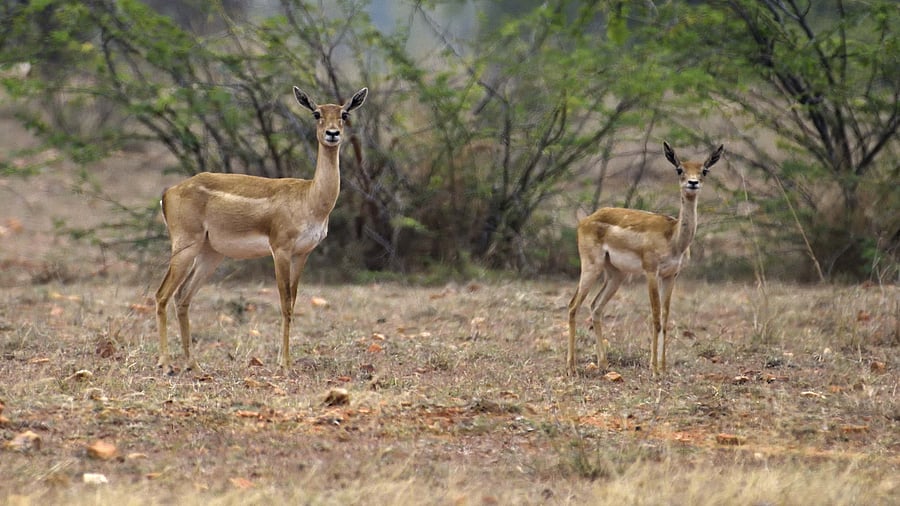
Bengaluru: The state government needs to adopt innovative approaches for the conservation of blackbucks with a study from a blackbuck reserve showing that twice the number of animals were detected outside the protected area compared to the numbers inside.
B R Manoj Kumar, T Ganesh and K S Seshadri from the Ashoka Trust for Research in Ecology and the Environment (Atree) studied the occurrence of the blackbucks in Jayamangali Blackbuck Conservation Reserve near Madhugiri in Tumakuru district to determine what drives their occupancy.
The 3.1 sqkm area comprising grassland, savanna-woodland and plantation trees was declared as a reserve in 2007. Blackbucks are spread over an area of 140 sqkm surrounding the reserve. Recent estimates have put the number of the animals at 784.
Wild pig, mongoose, hare, spotted deer, leopard, sloth bear and other animals share the space.
The researchers studied the presence of blackbuck twice in March-April and September of 2023. The study area - divided into grids - comprised 3.1 sqkm and the surrounding 2-km buffer of 23.5 sqkm. While the reserve itself had a greater proportion of tree cover, the surrounding landscape had a mix of scrub, fallow, grasslands, trees, wetlands and agricultural lands.
The study showed that the blackbucks thrived outside the reserve. Of the 102 grids outside, they were detected in 75. Whereas the animal was present only in 24 of the 65 grids inside the reserve. In terms of sheer numbers as well as percentage of the total area, a greater number of blackbucks were outside. The researchers cumulatively encountered 180 blackbucks across 14 grids, 13 of which were outside the conservation reserve.
“These observations point to the fact that conservation reserve may not necessarily aid in protecting the blackbucks, and there is a need to either expand the reserve or protect the habitats outside it,” the study said, noting that the lower occupancy inside was likely due to unsuitable habitat with limited resources.
The blackbucks’ grazing outside the reserve has become a challenge for the forest department, which spends substantial amounts annually to compensate for the crop loss. The authorities’ attempts to grow pulses in the core area to keep them inside the reserve have likely failed due to water scarcity. “Our findings underscore the urgent need for active habitat management and remediation within the JBCR to restore suitable open conditions,” the paper said, adding that conservation efforts must extend beyond the reserves and sanctuaries.
Seshadri, faculty at Atree, said the study demonstrates with evidence what observations have shown earlier: that grassland habitats need to be restored with native grass seeds. The planting of tree saplings in grassland ecosystems should not be allowed.
“Scientific management of the savannah-grassland landscape is the need of the hour. Site selection for afforestation should be mindful of open habitats, especially those declared as reserve or sanctuary for blackbucks. There should be a plan to remove the plantations inside such landscapes,” he said.
The paper suggested innovative approaches like community-based conservation, nature-based tourism and economic incentives for long-term conservation. Seshadri, however, noted that each approach comes with its own challenges.